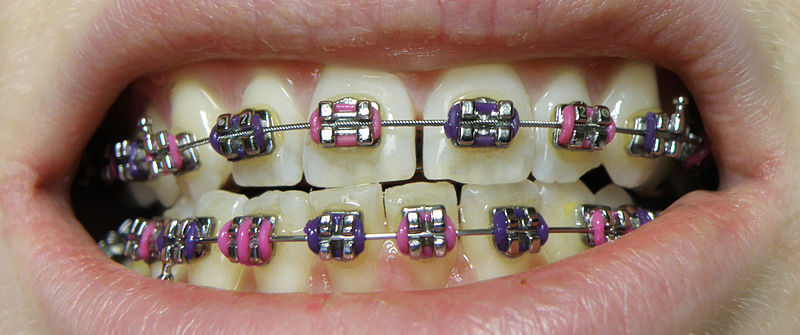Why Cumming Invisalign is the Perfect Choice for a Discreet Orthodontic Remedy
Why Cumming Invisalign is the Perfect Choice for a Discreet Orthodontic Remedy
Blog Article
Comprehensive Guide to Orthodontics Procedures for Remedying Dental Imbalances
In the realm of orthodontics, the trip to accomplishing a perfectly aligned smile entails a myriad of procedures customized to deal with dental misalignments. From typical braces to unseen aligners and even medical options, the field of orthodontics uses a variety of services to deal with differing degrees of dental abnormalities. Comprehending the intricacies of each treatment, including their systems, advantages, and prospective disadvantages, is important in making educated decisions concerning one's orthodontic treatment. As we browse with the extensive guide to orthodontic treatments for fixing dental misalignments, the intricate information of each technique will unfold, clarifying the course towards a harmonious and functional dental positioning.
Orthodontic Procedures Summary

Regular changes and tracking are critical parts of orthodontic treatment to make certain development is on track and to make any necessary adjustments along the method. By undertaking orthodontic treatments, clients can not only accomplish a straighter grin but also boost their total dental health and function.
Typical Dental Braces: How They Work
When taking into consideration orthodontic treatments for oral misalignments, traditional dental braces stand out as a reliable technique for dealing with teeth placing. Conventional braces are composed of brackets, cables, and bands that work together to apply continual pressure on the teeth, progressively moving them right into the wanted alignment.
One secret facet of just how conventional dental braces work is the process of bone renovation. As stress is put on the teeth with the braces, the bone surrounding the teeth is reshaped to sustain the new tooth positions. This remodeling is essential for the long-term stability of the remedied positioning. People will need regular modifications at the orthodontist's office to ensure the braces remain to use the correct stress for efficient teeth movement.
Invisible Aligners: Benefits And Drawbacks
Unnoticeable aligners supply a very discreet and practical choice to typical dental braces for remedying oral misalignments. These clear, personalized trays are virtually invisible when used, making them an appealing choice for individuals seeking a more cosmetically pleasing orthodontic therapy. One of the main benefits of unnoticeable aligners is their removability, permitting simpler maintenance of oral hygiene compared to traditional dental braces. Clients can get rid of the aligners before eating or brushing their teeth, lowering the risk of food getting stuck in the appliance and streamlining the cleaning procedure.

Surgical Orthodontic Options
Surgical interventions in orthodontics existing sensible options for attending to intricate dental misalignments that may not be properly fixed via conventional orthodontic therapies. While typical dental braces and undetectable aligners can remedy several orthodontic issues, specific situations need surgical intervention to accomplish optimal outcomes. Surgical orthodontic options are generally suggested for serious malocclusions, substantial jaw inconsistencies, and situations where the underlying bone framework requires adjustment to accomplish proper placement.
One common medical orthodontic procedure is orthognathic surgical procedure, which entails repositioning the jaws to correct practical issues such as problem talking or chewing. This surgery is commonly done in collaboration with an orthodontist who assists straighten the teeth prior to and after the treatment. Surgical orthodontics might likewise entail treatments to reveal affected teeth, eliminate excess periodontal tissue, or improve the jawbone to create a much more harmonious face profile.
Before thinking about medical orthodontic options, individuals go through a detailed analysis to identify the requirement and possible benefits of such interventions. cumming braces. While surgical procedure might appear overwhelming, it can substantially boost both the function and appearances of the smile in instances where traditional orthodontic treatments fall short
Retainers and Post-Treatment Treatment

Post-treatment care involves adhering to the orthodontist's directions faithfully. This might consist of proper dental hygiene techniques, attending follow-up visits, and wearing the retainers as prescribed. Failing to adhere to post-treatment treatment directions can lead to relapse, where the teeth slowly return towards their initial positions. Constant retainer read the article wear, good oral health, and routine dental examinations are vital for maintaining the outcomes accomplished via orthodontic surgery and guaranteeing the long-term security of the remedied oral positioning.
Conclusion
In final thought, orthodontic treatments provide different choices for fixing oral misalignments. Surgical orthodontic choices are available for extra severe imbalances. In general, orthodontic procedures can efficiently enhance oral health and visual look.
As we navigate with the comprehensive guide to orthodontic treatments for remedying dental misalignments, the elaborate information of each method will certainly unravel, losing light on the course towards a harmonious and practical oral placement. - orthodontist
One of the most usual orthodontic therapies is the use of braces, which consist of steel brackets and cables that use mild pressure to progressively change teeth into the wanted position.When thinking about orthodontic therapies for oral misalignments, standard braces stand out as a reliable approach for dealing with teeth positioning. Furthermore, invisible aligners might not be ideal for complex orthodontic problems that require more substantial teeth movement, as they are typically advised for mild to modest instances. Retainers are tailor-made orthodontic gadgets created to hold teeth in their fixed positions after the conclusion of orthodontic treatment.
Report this page